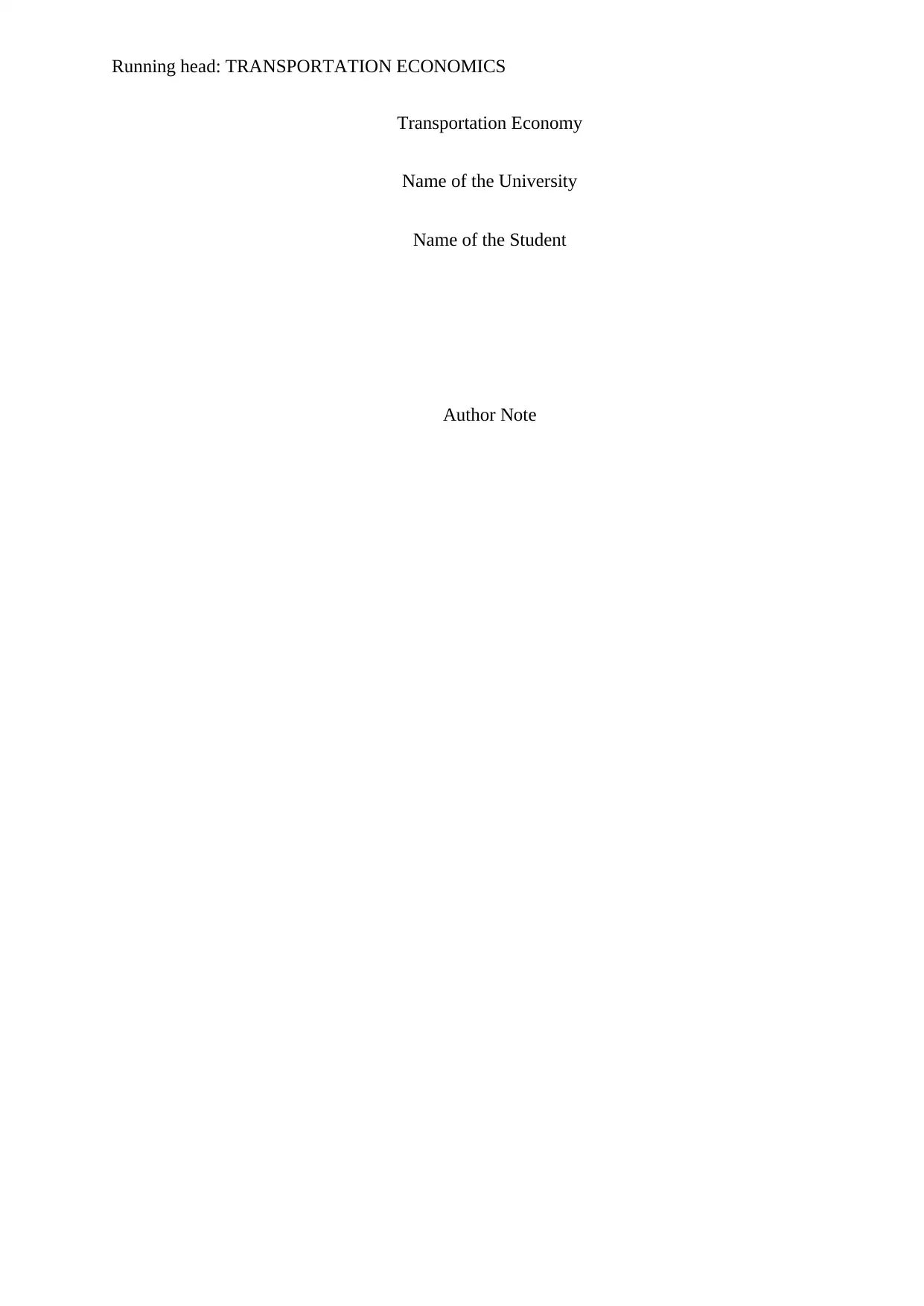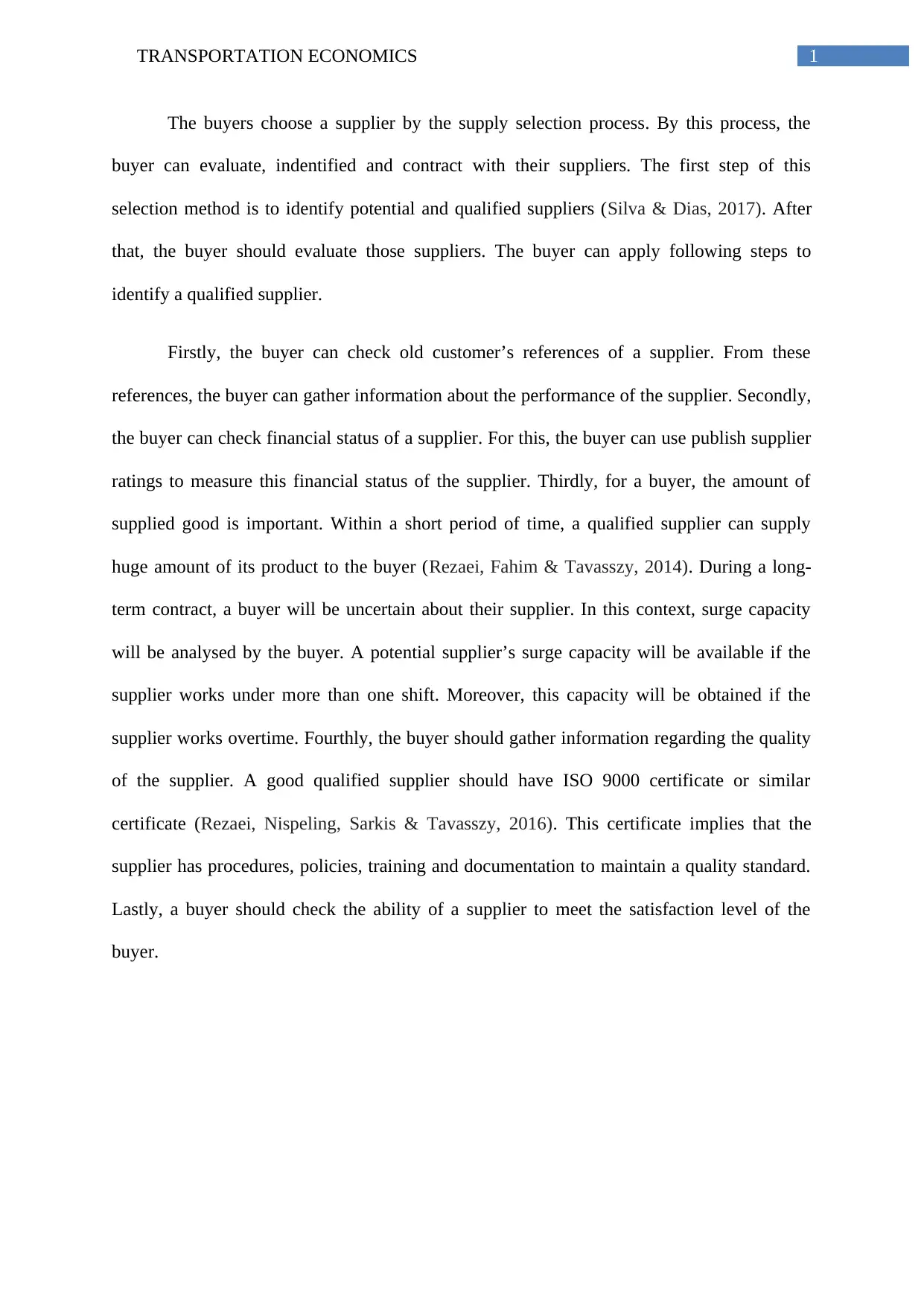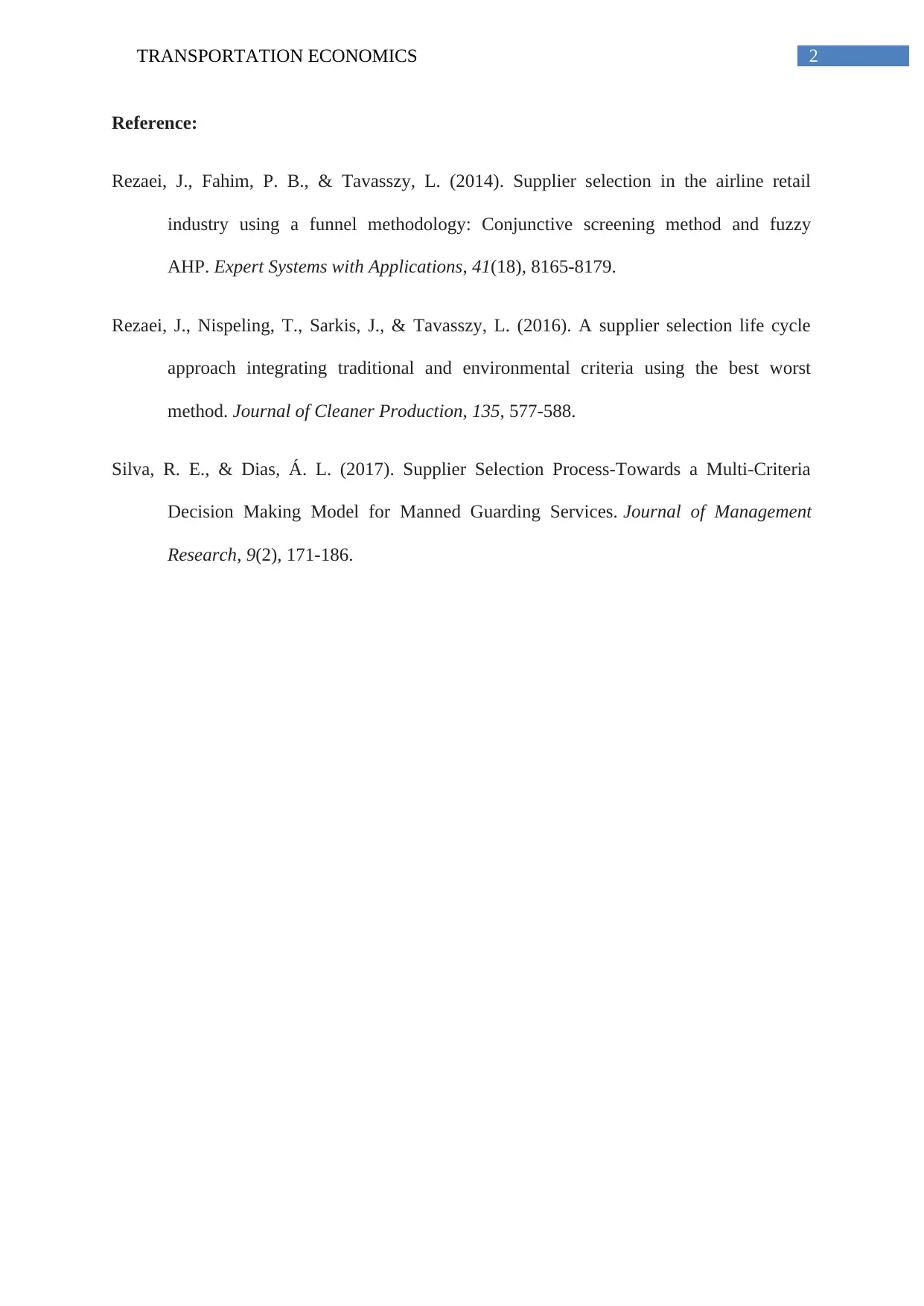Transportation Economics Report: Supplier Selection and Evaluation
VerifiedAdded on 2020/05/28
|3
|470
|248
Report
AI Summary
This report examines the supplier selection process within the field of transportation economics. It begins by highlighting the importance of the buyer's role in selecting suppliers and the initial steps involved in identifying potential suppliers. The report details the evaluation criteria used by buyers, incl...

Running head: TRANSPORTATION ECONOMICS
Transportation Economy
Name of the University
Name of the Student
Author Note
Transportation Economy
Name of the University
Name of the Student
Author Note
Paraphrase This Document
Need a fresh take? Get an instant paraphrase of this document with our AI Paraphraser

1TRANSPORTATION ECONOMICS
The buyers choose a supplier by the supply selection process. By this process, the
buyer can evaluate, indentified and contract with their suppliers. The first step of this
selection method is to identify potential and qualified suppliers (Silva & Dias, 2017). After
that, the buyer should evaluate those suppliers. The buyer can apply following steps to
identify a qualified supplier.
Firstly, the buyer can check old customer’s references of a supplier. From these
references, the buyer can gather information about the performance of the supplier. Secondly,
the buyer can check financial status of a supplier. For this, the buyer can use publish supplier
ratings to measure this financial status of the supplier. Thirdly, for a buyer, the amount of
supplied good is important. Within a short period of time, a qualified supplier can supply
huge amount of its product to the buyer (Rezaei, Fahim & Tavasszy, 2014). During a long-
term contract, a buyer will be uncertain about their supplier. In this context, surge capacity
will be analysed by the buyer. A potential supplier’s surge capacity will be available if the
supplier works under more than one shift. Moreover, this capacity will be obtained if the
supplier works overtime. Fourthly, the buyer should gather information regarding the quality
of the supplier. A good qualified supplier should have ISO 9000 certificate or similar
certificate (Rezaei, Nispeling, Sarkis & Tavasszy, 2016). This certificate implies that the
supplier has procedures, policies, training and documentation to maintain a quality standard.
Lastly, a buyer should check the ability of a supplier to meet the satisfaction level of the
buyer.
The buyers choose a supplier by the supply selection process. By this process, the
buyer can evaluate, indentified and contract with their suppliers. The first step of this
selection method is to identify potential and qualified suppliers (Silva & Dias, 2017). After
that, the buyer should evaluate those suppliers. The buyer can apply following steps to
identify a qualified supplier.
Firstly, the buyer can check old customer’s references of a supplier. From these
references, the buyer can gather information about the performance of the supplier. Secondly,
the buyer can check financial status of a supplier. For this, the buyer can use publish supplier
ratings to measure this financial status of the supplier. Thirdly, for a buyer, the amount of
supplied good is important. Within a short period of time, a qualified supplier can supply
huge amount of its product to the buyer (Rezaei, Fahim & Tavasszy, 2014). During a long-
term contract, a buyer will be uncertain about their supplier. In this context, surge capacity
will be analysed by the buyer. A potential supplier’s surge capacity will be available if the
supplier works under more than one shift. Moreover, this capacity will be obtained if the
supplier works overtime. Fourthly, the buyer should gather information regarding the quality
of the supplier. A good qualified supplier should have ISO 9000 certificate or similar
certificate (Rezaei, Nispeling, Sarkis & Tavasszy, 2016). This certificate implies that the
supplier has procedures, policies, training and documentation to maintain a quality standard.
Lastly, a buyer should check the ability of a supplier to meet the satisfaction level of the
buyer.

2TRANSPORTATION ECONOMICS
Reference:
Rezaei, J., Fahim, P. B., & Tavasszy, L. (2014). Supplier selection in the airline retail
industry using a funnel methodology: Conjunctive screening method and fuzzy
AHP. Expert Systems with Applications, 41(18), 8165-8179.
Rezaei, J., Nispeling, T., Sarkis, J., & Tavasszy, L. (2016). A supplier selection life cycle
approach integrating traditional and environmental criteria using the best worst
method. Journal of Cleaner Production, 135, 577-588.
Silva, R. E., & Dias, Á. L. (2017). Supplier Selection Process-Towards a Multi-Criteria
Decision Making Model for Manned Guarding Services. Journal of Management
Research, 9(2), 171-186.
Reference:
Rezaei, J., Fahim, P. B., & Tavasszy, L. (2014). Supplier selection in the airline retail
industry using a funnel methodology: Conjunctive screening method and fuzzy
AHP. Expert Systems with Applications, 41(18), 8165-8179.
Rezaei, J., Nispeling, T., Sarkis, J., & Tavasszy, L. (2016). A supplier selection life cycle
approach integrating traditional and environmental criteria using the best worst
method. Journal of Cleaner Production, 135, 577-588.
Silva, R. E., & Dias, Á. L. (2017). Supplier Selection Process-Towards a Multi-Criteria
Decision Making Model for Manned Guarding Services. Journal of Management
Research, 9(2), 171-186.
You're viewing a preview
Unlock full access by subscribing today!
1 out of 3
Your All-in-One AI-Powered Toolkit for Academic Success.
+13062052269
info@desklib.com
Available 24*7 on WhatsApp / Email
![[object Object]](/_next/static/media/star-bottom.7253800d.svg)
Unlock your academic potential
© 2024 | Zucol Services PVT LTD | All rights reserved.